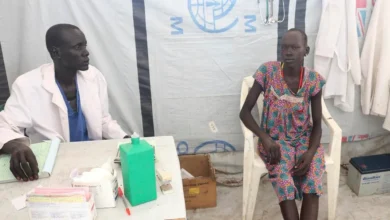China’s huge quarantine camps standing months after ‘zero COVID’
Nearly four months after China abruptly scrapped its tough “zero-COVID” policies following rare mass protests, authorities have yet to dismantle sprawling quarantine facilities designed for isolating hundreds of thousands of people, an Al Jazeera investigation based on satellite imagery shows.
Mass quarantine facilities in three Chinese provinces appear fully intact with no visible changes to their structure, an analysis of the satellite images shows, raising questions about the Chinese government’s post-pandemic plans for the now-defunct structures.
China’s quarantine facilities, which were previously used to isolate, and at times treat, positive COVID-19 cases and close contacts, became a symbol of the human cost of Beijing’s “zero-COVID” policy, which was dropped in December amid mounting public frustration with the draconian measures.
Beiijng’s overarching plan for its now-defunct quarantine centres, if there is one, is not clear.
Provincial authorities in Guangdong, Shandong and Sichuan did not reply to Al Jazeera’s requests for comment. Efforts to reach the National Health Commission (NHC) were unsuccessful.
In December, however, the NHC called on local governments to “upgrade” quarantine centres into hospitals with facilities including intensive care. The NHC said local authorities should carry out the upgrades with local needs in mind but did not specify the ratio or number of facilities that should be refurbished.
The satellite images obtained and analysed by Al Jazeera’s Sanad investigation unit cover six quarantine centres: three in northern China’s Shandong province, two in Guangdong province on the southern coast, and one in Sichuan in the centre of the country.
The facilities include Guangzhou’s 80,000-person capacity Nansha Health Centre, which was only completed in November. The furthest distance between locations – from the outskirts of Jining in Shandong to Guangzhou in Guangdong – is more than 1,700km (1,056 miles).
Sanad geolocated the quarantine centres using drone footage circulated on social media and analysed satellite images of the facilities taken within the last few days.
While the Chinese government has not published official figures, news reports and official statements suggest that a large number of makeshift structures were erected across the country during the pandemic.
As early as January and February 2020, the National Development and Reform Commission allocated 530 million yuan ($77m) to quickly build two prefabricated COVID-19 hospitals in Wuhan, the then epicentre of the pandemic. China State Construction allocated another 500 million yuan (72.6m) to the project, which was modelled after a makeshift hospital built during the SARS pandemic in 2003.
The two facilities were dismantled in April 2020 as China began to contain the first COVID wave but the model would be widely adapted again two years later in the midst of an even larger infection wave in the spring of 2022.
As authorities struggled to contain the virus once again, local and city governments got to work to flatten the curve and ultimately achieve zero cases.
Chinese health official Jiao Yahui said there were 33 prefabricated hospitals completed or under construction in March 2022 alone. In May, the director of the NHC, Ma Xiaowei, called for more quarantine facilities in an op-ed for the Communist Party’s Qiushi Magazine.Shanghai, a large COVID hotspot in 2022, by itself allocated at least 16.77 billion yuan ($2.4bn) for COVID-19 infrastructure, services, staff salaries and other needs in its 2022 budget. Like those of other local governments, the budget did not break down how much was spent on quarantine facilities specifically.
In August 2022, an NHC directive called for more reserve quarantine facilities, while stipulating they should be built with normal day-to-day functions in mind. Construction continued across China, including in Guangzhou, where authorities announced plans to build 36 facilities with a total capacity of 110,000 beds as late as November 2022.
Discussions on the costs and future of the quarantine facilities are difficult to find in China’s heavily-censored media.
A critical article on the news platform 163.com, which questioned who would pay for Shandong to dismantle quarantine camps built at a cost of 23 billion yuan ($3.3bn), had its contents deleted, although its title remains visible online.
In August 2022, an NHC directive called for more reserve quarantine facilities, while stipulating they should be built with normal day-to-day functions in mind. Construction continued across China, including in Guangzhou, where authorities announced plans to build 36 facilities with a total capacity of 110,000 beds as late as November 2022.
Discussions on the costs and future of the quarantine facilities are difficult to find in China’s heavily-censored media.
A critical article on the news platform 163.com, which questioned who would pay for Shandong to dismantle quarantine camps built at a cost of 23 billion yuan ($3.3bn), had its contents deleted, although its title remains visible online.










